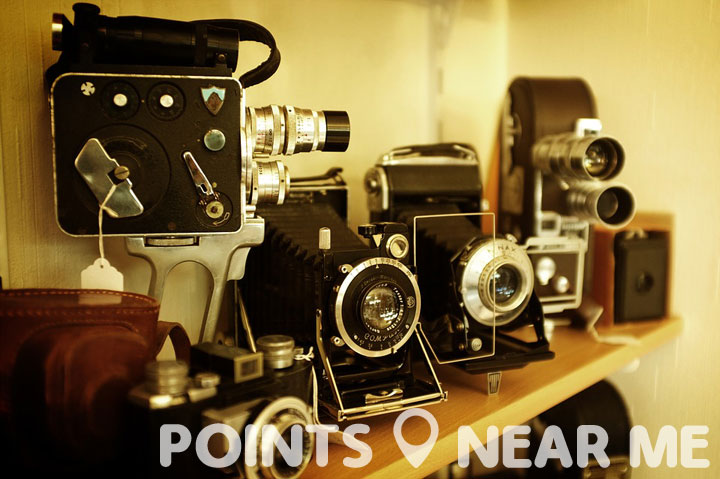Antique Near Me
Antique collectors not only enjoy the craftsmanship and detail often found on these items from days past,they enjoy the hunt. A trip to an antique store can mean hours of scouring, digging, and perusing some truly interesting items in the hope of finding that one perfect treasure. In other words, finding the perfect antique can be as much of an experience as purchasing the item itself.
Are you interested in finding antiques near you? Simply browse antique near me on the map below and find a list of antique stores located in a close proximity to your current location. Need a bit more information on the world of antiques? Read on for facts, trivia, and history on antiques!
Antique Near Me – Find it on the Map
Antique Near Me – Antique Trivia
When is an item considered an antique?
There’s a stark contrast between a vintage item and an antique item. Even though the two terms are often used interchangeably, an antique item is much different from an item that is considered vintage. The rule of thumb used by most antique dealers is that any item that is 100 years old or older is considered an antique. Items that are old, but not more than 100 years old, are deemed vintage. Starting in 1930, US government put a tax law into effect stating that an item was to be considered an antique item if made before 1830. This about the time when mass production began in the United States. The law states that antiques are “works of art” with craftsmanship behind them. Antique items are not currently taxed, in 1966, the 100 year old standard was officially adopted to keep dealers and individual salespeople from claiming that certain items were antiques when they actually weren’t. Not only did this rule of thumb help to protect the buyer, but it allowed individuals to navigate the saturated market of antiques and vintage items with ease. If you’re searching antique near me, remember the 100 year rule of thumb when making a purchase.

The rule of thumb: antiques are 100 years old or older.
Without a date, how do you know if an item is an antique?
Often when searching antique near me, you end up at stores or antique lots that don’t necessarily place a date on items for sale. This can often leave you bewildered as to if the item you are about to purchase is an actual antique or just a vintage piece. There are some things you can certainly look for while buying. For example, always consider the craftsmanship of the item at hand, the overall condition, and if possible the country it comes from. Most antiques tend to come from England and France, but this will depend on where you are located. Check on the artistry of the piece. Elaborate and hand carved pieces with intricate detail are often antiques as the were produced before the advent of mass production. Mass produced items were often more basic and utilitarian in function. Though not all hand carved or intricate items are antiques, this is a good rule of thumb to follow. To spot a true antique, you can also look at the joinery. You will be able to tell pretty easily if a machine was used or not to create the piece based on the joints of the item. Machine made furniture was not a thing until the 1860s. You can also look for saw marks. Any rounded or circular markings could not have been made until this time. Before 1860s, a plane, drawknife, or spokeshave was used. All of these items would’ve caused straight saw markings.
Antique Near Me – Antique Facts
Conservation or Restoration
One of the difficulties in spotting an antique piece while searching antique near me is concluding if the item was restored or simply conserved. Many people, including some antiques dealers, do not know the difference. Conservation is often defined as any action that is taken to preserve or prolong the life of an antique or artifact. This means that the conservator or owners took great strides to prevent deterioration due to structure, human contact, or the environment. Restoration on the other hand is any action taken to return the artifact or antique to its original state. This can mean removing signs of wear and replacing missing pieces. Unfortunately, restoration can devalue an antique item as modern technologies, stains, and hardwares are used to restore the item to a near perfect state. Conserved items on the other hand were protected and preserved in such a way that remained perfect or close to it in their original state.
Antique Paintings Need Air
One thing you may not realize while searching antique near me, is that certain antique items require certain degrees of care. For example, one thing many antique collectors don’t realize is that antique paintings often require air. You should not place a piece of glass over your oil or canvas painting, though that was originally the rule of thumb. Instead, it is best to frame the painting to insure the paintings stretcher is protected, but the surface is left free from glass or other types of covering. If you cover your painting with glass or other protective barriers, the pigment on the piece will dry out over time and begin to flake off of the canvas. This can essentially ruin your painting over time and cause massive devaluation.
Antique Books
Another item often collected by individuals are antique books; however, when it comes to reselling old books there some very basic rules of thumb. First, if you can smell it, the seller shouldn’t be selling it. If a book has an odor, it is typically the result of storage in a moldy or mildewed environment. Books should always be stored in areas with plenty of proper ventilation and low moisture levels. Old books should also always be stored upright. The key is to take pressure off of the book’s spine. In order to command high value, the spine must be in good shape with no missing pages, damaging marks, or blemishes on the cover.












